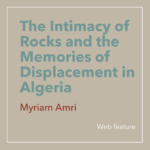
I. BURNING BANKNOTES
In Tunisia, there are two common ways to destroy a banknote: burning or grinding. Burning was the old way the dinar banknotes were destroyed. It was a multi-step process. First, you had to determine which banknote was going to be burned. Then, you had to separate these banknotes from the rest of the bills. For example, when private banks bring the cash they have in extra to the Central Bank, each damaged banknote is identified and put aside. Some are only slightly ripped. They just need a little tape here and there so that they can be sent back into circulation, tattered but still usable. When the official parts of the banknote are destroyed—the security line, the unique identifier, the signature proving its authenticity—that’s when a banknote is declared unrecoverable. All the notes that cannot be saved are put on the side in the Central Bank’s General Fund in the entresol of the building, a liminal floor between the ground floor and first floor, guarded by chipped crimson cell doors. Then every few months when there are too many damaged bills filling the safe, the General Fund destroys them.
Picture the scene. A man of the infamous Tunisian “idara” in a suit probably too large for him yet with a shirt too small, popping a little bread belly out. The color of the suit is of your choosing; a grayish-blue if you are feeling nice toward agents of bureaucracies, a terrible light beige with sweat stains if you’re coming out of an endless queue of a public administration only to get an “arja3 ghodwa” (come back tomorrow). Around him are a few agents. Of the 850 employees of the Tunisian Central Bank, some have been at the bank for at least twenty years and others are rookies, brought in only in the past decade after the revolution when state institutions decided to quell unrest by hiring and hiring, thinking protests would stop only if everyone became a state employee.

The cash, all these too-damaged banknotes, are put into black bags that look like sports bags, actually. You will have to believe me on this detail, as it’s impossible to take a photo of money coming out of or into the Central Bank. So try to picture a sports bag, black and a bit dusty, filled with damaged bills: 5-dinar bills turned from their green/yellow into a moldy brown, 10-dinar bills with all sides ripped, 20-dinar bills that look more gray than pink, and the highest denomination, the 50-dinar bill, crumpled, taped over, and shredded. We have our state employee in his costume and mustache with our bills, our bags. Now, all we need is a white van with no windows and two police officers, wearing black and blue or all black if they’re with the special forces, slinging large rifles across their bodies. If you’re lucky, you will see the van coming out of the underground parking of the Central Bank, carrying its police officers, its Central Bank employees, and brimming with black sports bags stuffed with packs and packs of damaged banknotes.
Back then, the van would go someplace, usually an incinerator. It was rumored, though, that even empty fields in the outskirts of Tunis could sometimes do the trick. Maybe a team from a company that specialized in burning precious things would be hired. It might just have been two or three guys in another white van, one that does have windows and is covered with dust, hired by the Central Bank to do the same job every few months for years and years. To burn damaged banknotes. No matter where and how it was done, there was one fixed principle in this process. There had to be a representative of the Central Bank’s General Fund. Not any Central Bank employee who had some time between inflation rates and emission costs. No, an employee of the entresol, one who worked between the red cell doors. Banknotes are imagined, designed, and issued in the General Fund, so they also had to die in its attendance, with one of its employees cradling his creation. That meant that banknotes could not be burned at the local branches of the Central Bank, in the cities of Sousse, Mednine, or Jendouba. No, they could only be burned in the capital, in Tunis, brought back in packs via white vans crossing the country. The General Fund had to always be where banknotes are born and where they go to die.

The ashes of the banknote had to be collected. You couldn’t burn banknotes and leave their remains scattered all over Tunisia, little scraps of bills in the wind. They were collected and buried. Imagine the spectacle: an empty wasteland somewhere outside of Tunis, a bank employee missing his morning coffee or lamenting the way-too-heavy lunch he just had, two mildly amused police officers who yesterday were beating young men and today are burning cash. Two or three people from god-knows-what incinerator or private company in all-white hazmat suits. They deposit the black bags into the ground. Maybe they empty the tightly clustered packs of dinar bills or maybe they leave the bags closed as is. They probably at least open the bags, so they can get a glimpse of the bills and watch the banknotes draw their last breath.
Through a pipe attached to a gas cylinder, the men hose a product down on the bags. It’s most likely blue fire, propane, that licks the corners of each dinar and carefully makes its way to its core. Perhaps they use a lighter, or one of the police officers throws the end of a cigarette into the mix to start the fire. Noises, little cracks, groans, shrieks, escape the mouths of the bags as paper money rustles against the fire. The men watch the fire consume the banknotes, and once it has taken every bill, they collect the combusted scraps left on the ground. It could even be that one of the men slips the leftover of a burned bill in his pocket as a souvenir, to show it off to his friends, to decorate his office with it. They bury the ashes there in the ground, or maybe they keep them and transport them somewhere else unknown and unimaginable, a place where all banknotes are buried. Maybe they take the ashes back to the General Fund where there is a room with a large safe where all the ashes of the Tunisian dinar repose.
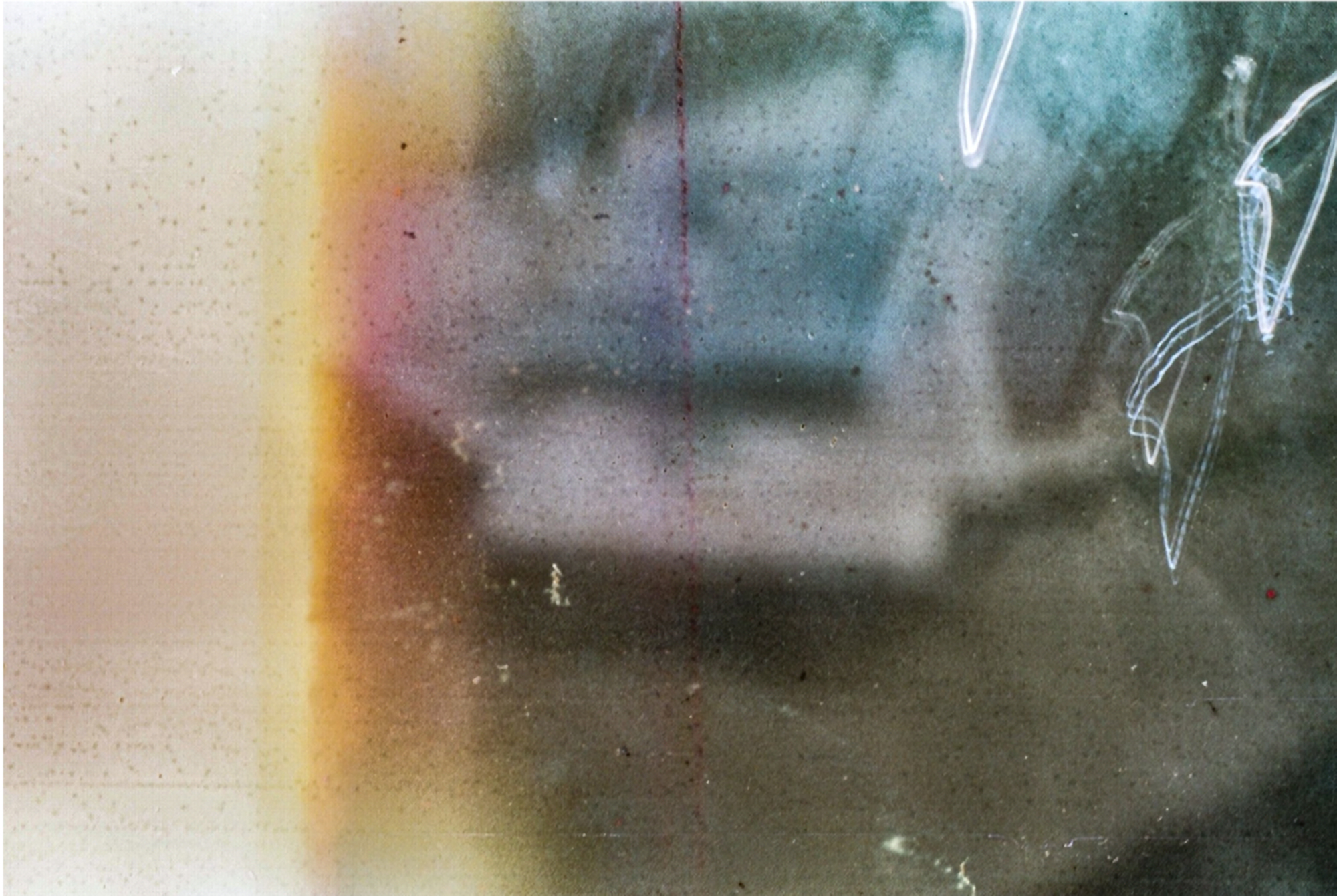
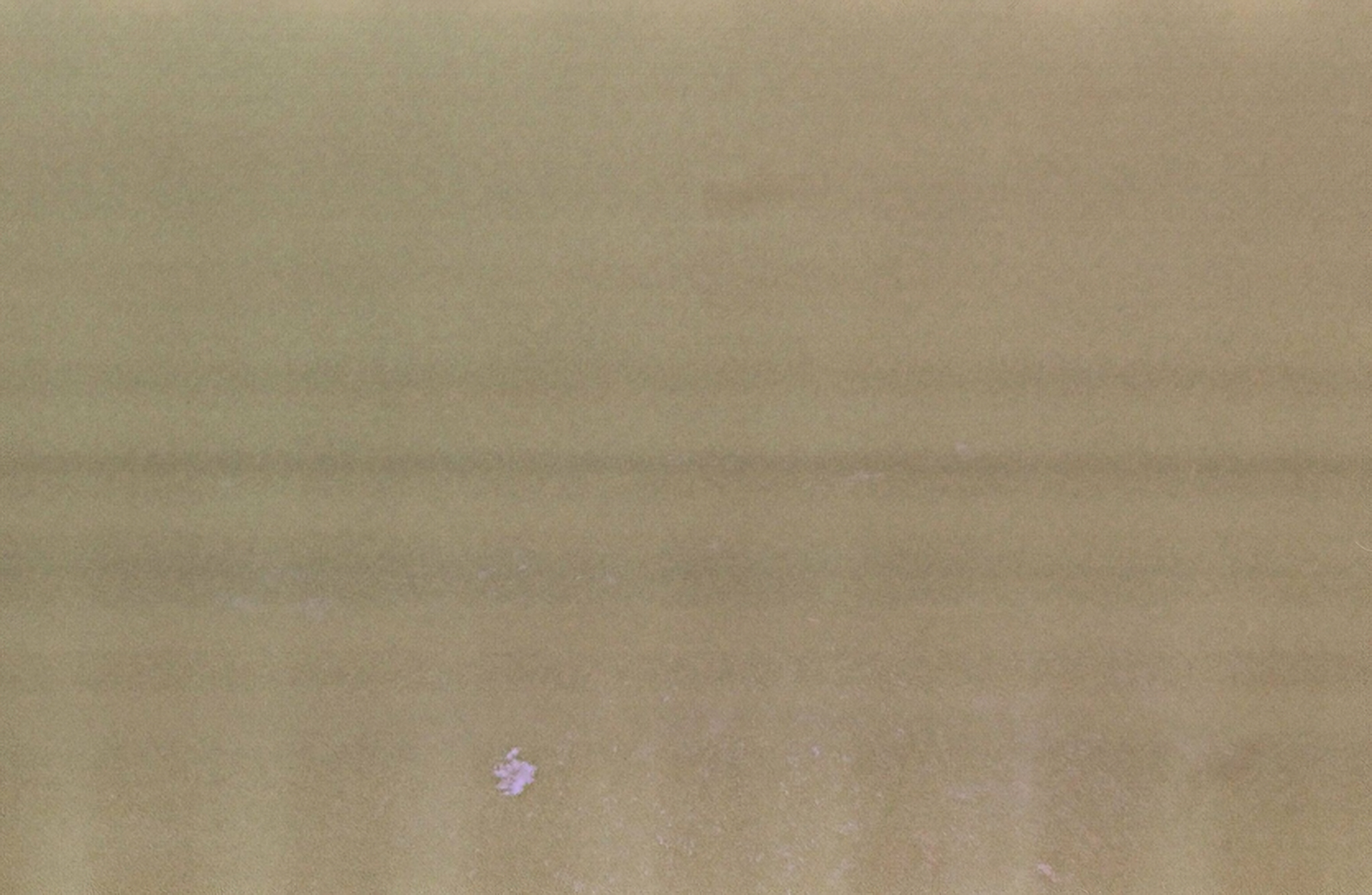
Nowadays, destroying banknotes is a bit less melancholic. There are large machines that count bills and automatically detect the damaged ones. Damaged bills appear to the machine the same way counterfeit banknotes do: They are unreadable. Employees then take the bills, and usually by touch and sight, feeling them pass through their fingers, they know if these unreadable bills are counterfeit or just damaged. They pass them into another machine that crushes them. The machine grinds bills nonstop, until it’s the end of the workday, from 8:15 AM to 5:30 PM, every day of the week, bill after bill after bill. In this mode of destruction, time and quantity cease to matter. Bills are destroyed every day; they do not fill safeboxes or sports bags anymore. There is no ceremony, no group of men in a field around a fire. A banknote’s last breath has turned mundane.
There are still scraps left here too, though. Little packs of a million fragments of shredded banknotes tightly wrapped in cellophane. These are not buried or destroyed further. They are stored at the Central Bank—not even at the General Fund—just wherever there is space. They are given to employees, displayed in the museum of money, and even gifted to foreign dignitaries. Here is the waste left from our national currency. Welcome to Tunisia.



II. MAKING THE WRONG BILLS
On September 25, 2018, a rather strange conversation took place on a popular Tunisian radio show, entitled “Your Secret in a Well.” Anonymous individuals would usually call into the show to share their darkest secrets and seek guidance (men cheating on their wives, pregnant unmarried women, or estranged family members). On that day, a twenty-seven-year-old woman called to confess that, four years earlier, she had been involved in a counterfeit money scheme and produced a set of fake twenty Tunisian dinar bills. The twenty-dinar bills were pink with the face of the leftist anti-colonial resistance leader Farhat Hached on them next to a red and round “20”. One of her colleagues had printed the banknotes in their shared office with a color printer on A4 paper that she cut into. Paper money was incredibly hard to find, it was produced by a single company based in Switzerland that had a well-guarded recipe to make the paper, the main thing most counterfeiters struggled with. That is why bankers touch cash. When they pass their fingers, they can almost tell you. It is never about design or visuals or even the security lines that shine on the right side of a banknote. It’s about the paper.
Realizing the potential consequences, the young woman decided to give the money to a male friend to burn. Unfortunately, the friend circulated the printed currency at a bar and got arrested for it. The police traced the operation back to the young woman and ordered that she present herself to the closest police station. Instead, she quit her job and fled her family’s home out of fear. When she called in, she had been in hiding for the past four years, evading judicial requests to present herself in court. The woman explained that she called to seek moral guidance and “come back on the right path.” The show’s host, rather unmoved by the case, asked her to elaborate on two things: first, whether it was really possible to produce fake currency with just a color printer; and second, if the infamous male friend was just a friend, implying the possibility of a more intimate relationship. Through his questions, the radio host implied that what mattered in the story was how money became materialized using a printer to issue fake banknotes and how that fake form led to examining the morality of the young woman. Her morality was not only questioned by the host when he asked about her relations with her male friend, but also by herself.

The story was not unusual. Cases of illicit currency had become common in Tunisia in the past years. Almost every month, the media reported currency trafficking across the borders, money laundering, thousands of Tunisian dinars in cash discovered behind closed doors, and the many ways people attempted to make fake banknotes. The story of the young woman is nonetheless revealing. It shows how counterfeit money disrupts the sanctity of currency as a form of money produced by an official state authority. Indeed, if a color printer might be enough to print money, then what is legitimate about an official currency and the authority that produces it? The story also illuminates circulation as a process of make-believe. The counterfeit money was exchanged like a real banknote up to the moment it was discovered as fake, and only then did it become a criminal act. This tale shows how fake currency carries with it a set of moral understandings about the type of people who traffic it, that they are sexually promiscuous and possibly immoral subjects.
In attempting to create a form of the Tunisian dinar, one unsanctioned, illicit, unacknowledged, and criminal, the young woman subverted a certain moral order. The moral order and authority of the institutions issuing the national currency, replaced by a mundane printer at work. The moral authority of those who manage currency, its creation, its circulation, and its destruction, replaced by that of a young woman and her male friend, exchanging currency not from the Central Bank to the banks but from a workplace to a bar. If the moral order was unsettled in this counterfeiting story, it still was never destroyed. In the radio show, it was not a national currency that was prosecuted, but a young Tunisian woman, on the run, labeled as immoral and made to question and doubt the subversiveness of her own actions.

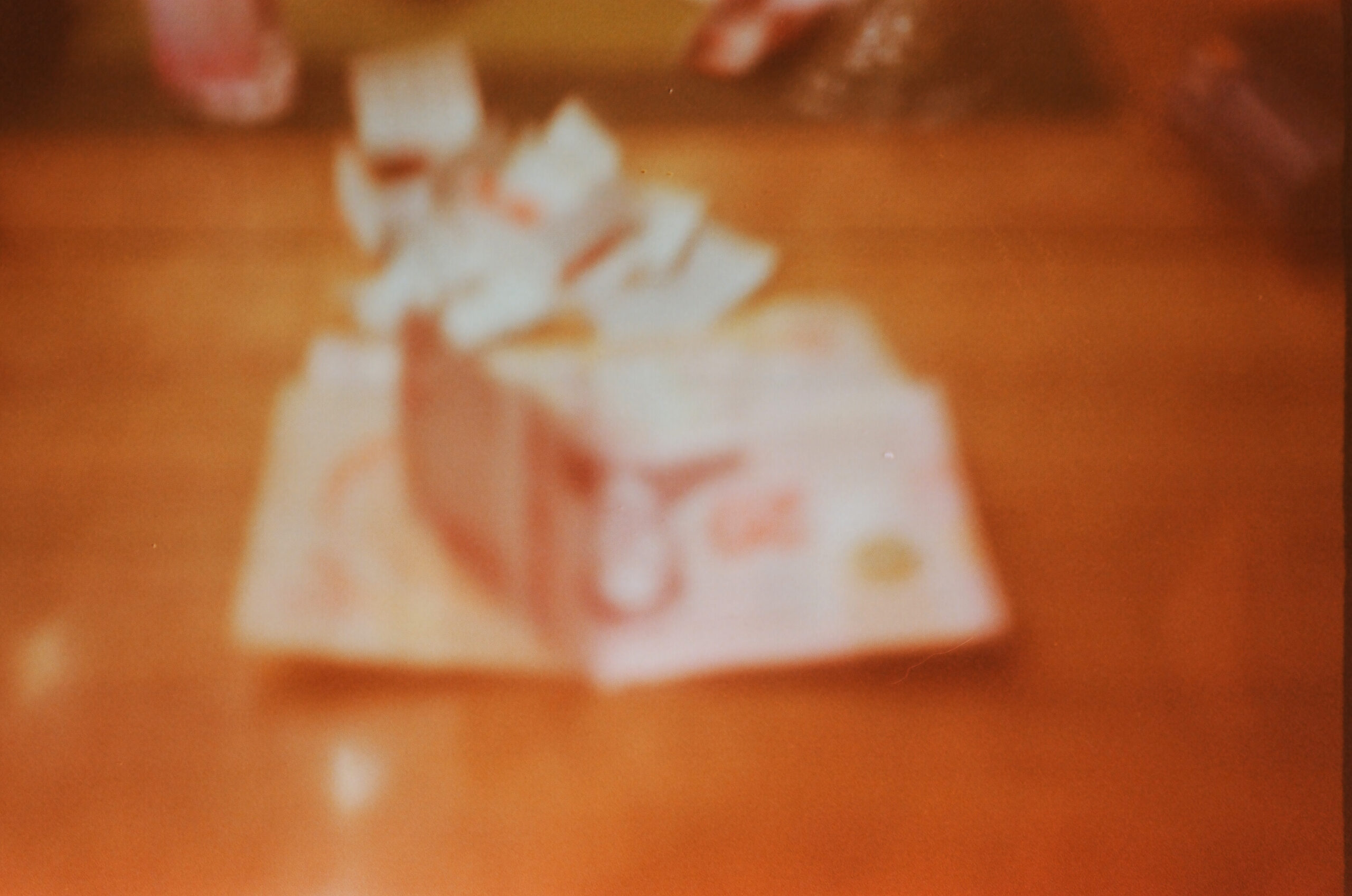

III. THE BRIDE’S COIN
The Museum of Currency is a construction made of concrete on one of Tunis’s largest avenues. The building itself is a sort of small replica of the structure next door, a large eight-floor light beige structure that hosts the Tunisian Central Bank. The Central Bank building looks like a large ship, made of materials that would never float on water and barely keep afloat onshore too. The Museum of Currency, created in 2008, did not shy away from the sea metaphor already implicit in its mother’s structure. The museum is almost all in dark blue tones with matching floors, reminiscent of the high waters, and a blue ceiling dotted with sparkles in a literal interpretation of “night sky dotted with stars.” It is small, its main room and mezzanine saturated with gray showcases that display currencies from the Phoenician era to the banknotes in circulation today. Yet, an entire era is missing. The Ben Ali era. The era of dictatorship. The era the museum was built in. Every banknote of that period has been removed.

Yet this is not what this story is about. This tale is instead about a bubbly type of currency, a coin that mirrors celebrations, sanctioned joy, and social reproduction. This story is actually about a Facebook group and the whisper networks that create trends. The backstory you need is this: Money is often exchanged in Tunisian weddings. Family and close ones bring red envelopes of cash, whose sum is read out loud if you are in a working-class wedding or which is insidiously slipped in the pocket of the bride’s father with a wink if you are in a bourgeois ceremony. In weddings, the groom gives his bride a single piece of the Tunisian dinar, a coin or a banknote, sometimes 50 dinars, sometimes just a polished coin of one dinar. The sum matters very little. It is symbolic of the tradition of dowries and provides a sign of the futurity of the partnership, of financial security and wealth passing between the man–always the provider–and the woman– always provided for. El Mahr. Currency, passing seamlessly, cements the normative assumptions of reproduction and erects a pillar in this patriarchy.

Two to three years ago—though no one can place a clear timestamp on it—a new trend surfaced at weddings. Rather than choosing just any coin, grooms now gave a specific one. A 5-dinar coin issued in 1976 and which remained in circulation until 1978. The coin had been issued to mark the twentieth anniversary of Tunisia’s national independence from the French. Like every single coin and banknote since the creation of the Tunisian dinar in 1958, it bore the face of Bourguiba, Tunisia’s first dictator. The coin was around 95% pure silver, a rarity at that time when the silver of coins was already mixed with nickel, making them lighter yet less valuable. But this was the twentieth year of independence and it needed its dignified coin. When the coin entered circulation, the Central Bank noticed it did not come back, not even to private banks or cashing agencies. People kept the coin for themselves. Some stored it with their gold jewelry, in a box on a nightstand, underneath the mattress, or in a porcelain pot in the kitchen. Many people sold it to the jewelers who melted the 5-dinar and used the silver for necklaces, rings, or pins. For a year, the Central Bank warned the public in the press that coins could not be kept or melted. Modernity was about monetary circulation and if the Tunisian citizen wanted to be modern, he and she needed to spend and spend and gather all the hidden 5-dinars for a trip to the old market or to the newly-emerging stores of the 1970s. After two years, the Central Bank gave up. It announced the coin would be taken out of circulation and its reserves would be stored at the Bank’s General Fund in heavy paper bags.
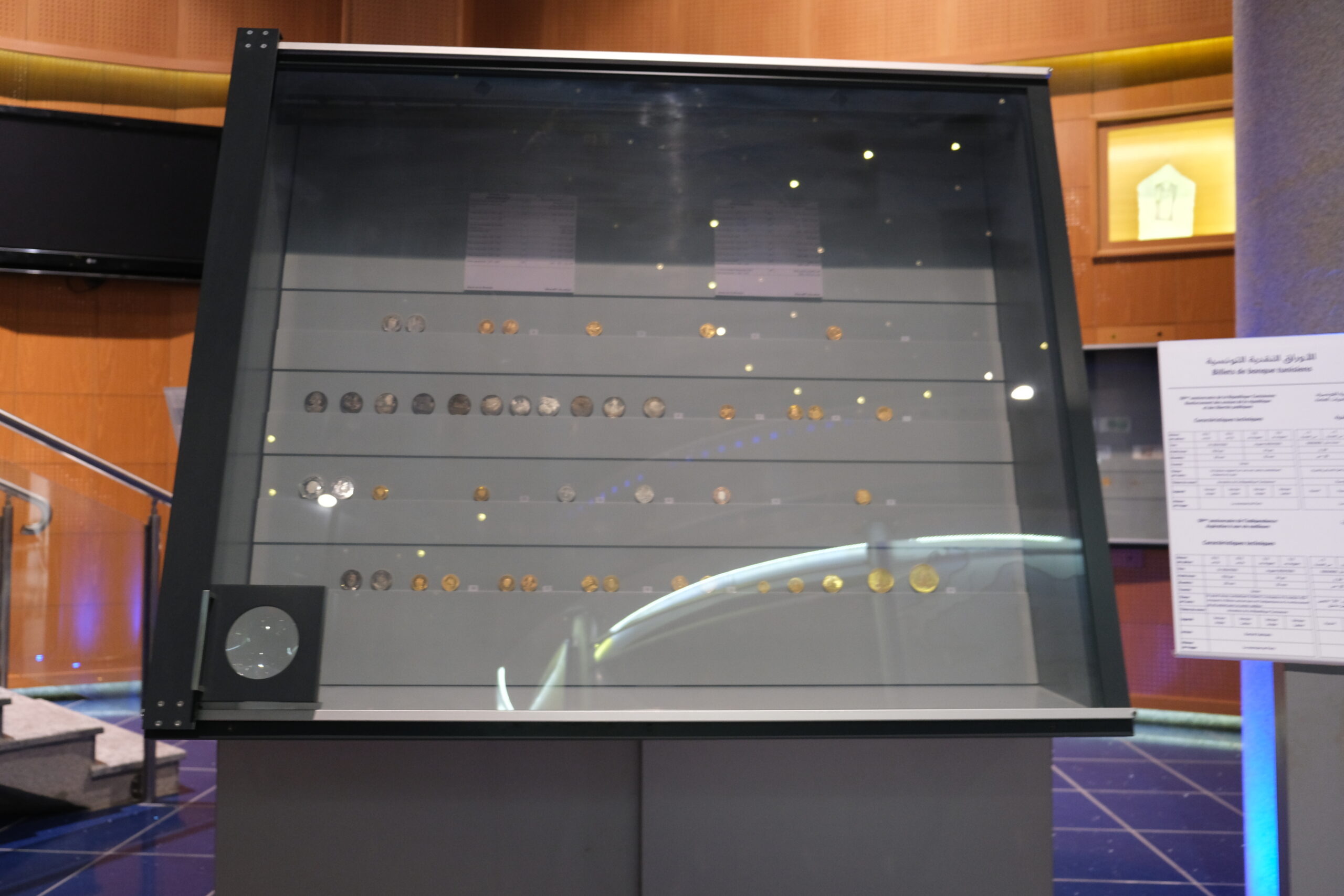



Fast-forward to 2008. When the museum of currency was inaugurated, the Central Bank decided that at the back of the building, in a little right nook, there would be a boutique where discontinued coins and banknotes could be sold. Back then, the Central Bank catered to coin collectors from all around the world who might be missing a Tunisian dinar to fill their private displays. However, almost a decade later, on a Facebook page entitled “What I Wore to My Wedding,” a woman posted the picture of the 5-dinar of 1976 resting in a blue box with gold lettering: “Central Bank of the Republic of Tunisia.” Above the image she wrote, “My Mahar” followed by what we can only imagine are a set of emojis: hearthearthearthearkisskissweddingringfireworks.” “Mabrouk” after “mabrouk” for 200 comments punctuated by “where did you get this coin?” And her reply: “At the Museum of Currency.”
The Museum is closed on Mondays. If you go on Tuesdays after 10 AM, you will see one man after another entering, stopping uneasily in front of the high sea tides decor and rushing to the back of the room to the boutique. Grooms, friends of grooms, cousins of grooms, brothers of grooms, fathers of grooms, fiancés, couples, sometimes the brides themselves, usually in a rush. “I’m looking for the 5-dinar wedding coin.” When one of these buyers is asked how they knew the coin was sold here or how they learned about this trend, the responses would vary: “Facebook.” “Oh, you know, like everyone.” “At another wedding.” “My brother did the same two years ago.”
Their only question in return was: “How much does the coin cost?” The answer? 114 dinars, but that also includes the box.



Myriam Amri
Myriam Amri is a Tunisian researcher and visual artist. She is a PhD candidate in Anthropology and Middle Eastern Studies at Harvard University and her research examines money and its materiality in Tunisia and Algeria. Her creative work explores space, historical memory, capitalist imaginaries, and dystopian aftermaths of waste and decay in North Africa through analog photography, video art, and documentary filmmaking. She is currently completing a documentary film on historical memory and spatial transformations in a neighborhood of Tunis. She is also the co-founder of “Asameena," an Arab cultural and literary collective.




